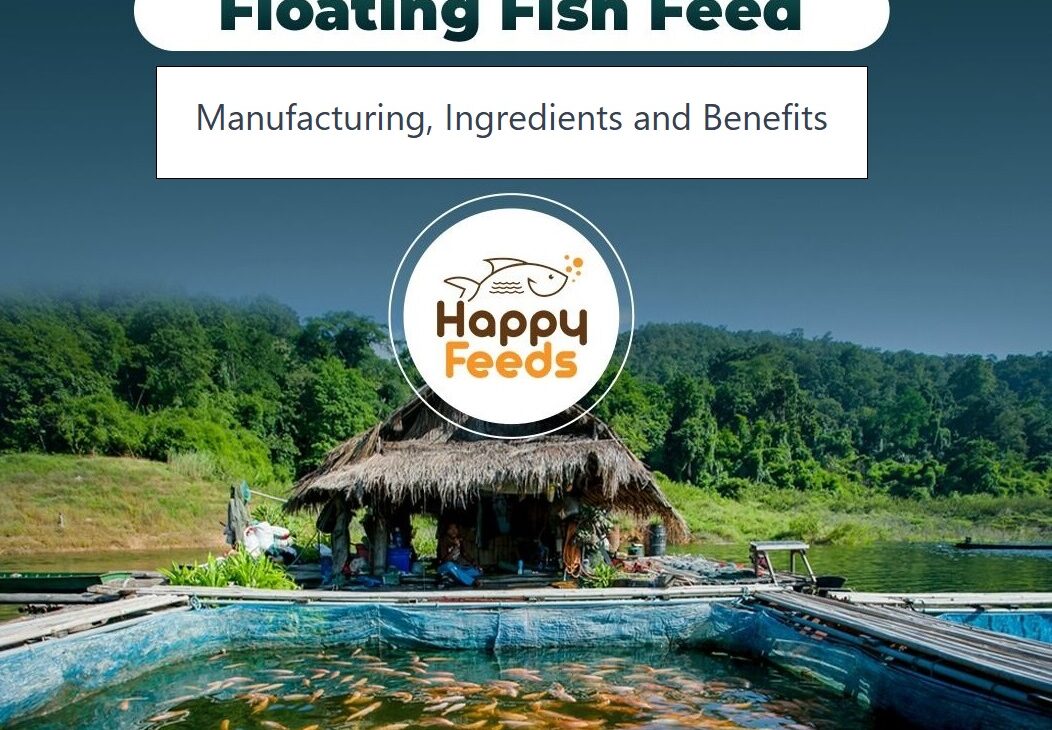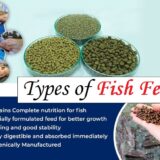Floating Fish Feed: Manufacturing, Ingredients, Sustainability, and Benefits

Introduction Floating fish feed plays a vital role in the aquaculture industry by providing essential nutrients for fish growth and health. This article explores various aspects of floating fish feed, including its manufacturing process, ingredients, sustainable applications, novel proteins as a solution, benefits of automatic fish feeders, and floating fish feed prices in India.
What is Floating Fish Feed?
Floating fish feed refers to specially formulated pellets or granules designed to meet the nutritional requirements of fish in aquaculture. These feeds are buoyant and float on the water surface, making them easily accessible to fish. Floating fish feed contains a balanced blend of proteins, carbohydrates, fats, vitamins, and minerals to promote healthy growth, immunity, and reproduction in fish. They are available in various sizes and formulations to cater to different fish species and developmental stages.
Manufacturing Process of Floating Fish Feed
The manufacturing process of floating fish feed involves several steps. Firstly, the raw materials, such as fishmeal, fish oil, grains, cereals, soybean meal, and various additives, are collected. These ingredients are carefully selected to ensure a balanced nutritional profile for the fish feed.
Next, the ingredients are ground, mixed, and blended to achieve a homogeneous mixture. The mixture is then passed through a preconditioner, where steam and water are added to improve its texture and binding properties. The conditioned mixture is extruded through a pelletizing machine, which shapes the feed into small pellets or granules.
After extrusion, the pellets or granules are dried to remove excess moisture. The drying process helps enhance the feed’s shelf life and prevents the growth of molds and bacteria. Finally, the dried fish feed is cooled and packaged for distribution. Some Species require Oil coating for Fat, so oil coating may be done as required for Fish species.
Ingredients Used in Making Floating Fish Feed
Floating fish feed contains a range of ingredients that provide the necessary nutrients for fish. The primary ingredients used in the production of fish feed include:
a) Fishmeal: A high-quality protein source derived from processed fish, which serves as the primary protein component in fish feed.
b) Fish Oil: A rich source of essential omega-3 fatty acids that contribute to fish growth, brain development, and overall health.
c) Grains and Cereals: These include wheat, corn, rice, and barley, which serve as sources of carbohydrates and energy in fish feed.
d) Soybean Meal: A plant-based protein source that complements the animal protein in fishmeal, providing a well-balanced amino acid profile.
e) Vitamins and Minerals: These are essential for fish metabolism, growth, and immune function. Commonly included vitamins are vitamin A, vitamin D, vitamin E, and B-complex vitamins.
f) Additives: Additives such as antioxidants, probiotics, prebiotics, and enzymes are incorporated to improve feed stability, digestion, and overall fish health.
Sustainable Application and Supply Chain of Fish for Human Consumption
Sustainability is a crucial aspect of fish farming to ensure the long-term viability of fish feed production and the availability of fish for human consumption. To achieve a sustainable supply chain, several practices are adopted in the aquaculture industry:
a) Alternative Ingredients: Exploration of alternative protein sources such as insect meal, single-cell proteins, and algae can reduce reliance on fishmeal and fish oil derived from wild-caught fish.
b) Waste Utilization: Utilizing agricultural and food industry by-products as feed ingredients minimizes waste and reduces environmental impact.
c) Efficient Feed Conversion: Improving feed conversion ratios through better feed formulation and nutritional management reduces the amount of feed required to produce a given amount of fish.
d) Responsible Farming Practices: Implementing responsible aquaculture practices, including minimizing water usage, reducing pollution, and preventing disease outbreaks, helps maintain ecological balance and protect natural resources.
e) Certification and Traceability: Implementing certification schemes and traceability systems ensures that fish feed and seafood products meet sustainability standards and are sourced responsibly.
Novel Proteins as the Solution for Fish Feed
The search for alternative protein sources has led to the development of novel proteins for fish feed. Some of these innovative protein sources include:
a) Insect Meal: Insects such as black soldier flies, mealworms, and crickets are rich in proteins and can be sustainably produced using organic waste as feed. Insect meal provides an environmentally friendly and cost-effective alternative to traditional protein sources.
b) Single-Cell Proteins: Single-cell organisms, such as yeast and bacteria, can be grown using renewable resources like agricultural residues and by-products. These proteins offer a scalable and efficient solution for fish feed production.
c) Algae and Microalgae: Algae and microalgae are rich in proteins, lipids, and essential nutrients. They can be cultivated in controlled environments and serve as a sustainable source of proteins and omega-3 fatty acids for fish feed.
d) Plant Proteins: Expanding the use of plant-based proteins, such as legumes, can reduce the dependence on fishmeal and contribute to a more sustainable fish feed industry.
Five Benefits of Feeding Fish with Automatic Fish Feeders
Automatic fish feeders offer several benefits in fish farming operations:
a) Feeding Precision: Automatic fish feeders provide consistent and precise feeding, ensuring that fish receive adequate nutrition for optimal growth and health.
b) Time and Labour Efficiency: These feeders save time and labour by automating the feeding process, freeing up farm workers to focus on other essential tasks.
c) Reduced Feed Waste: Automatic feeders dispense feed in controlled amounts, minimizing overfeeding and reducing feed waste, which is both cost-effective and environmentally friendly.
d) Improved Feed Management: By scheduling and programming feeding times and quantities, automatic feeders enable better feed management and control, leading to improved fish growth rates and feed conversion efficiency.
e) Reduced Stress: The automation of feeding reduces human interaction, minimizing stress on the fish, which can contribute to improved overall fish health and performance.
Floating Fish Feed Prices in India
The prices of floating fish feed in India can vary depending on factors such as feed quality, brand reputation, and regional market dynamics. As of the current market trends, floating fish feed prices range from INR 35 per Kg to INR 90 per kilogram, with variations across different fish feed brands and formulations.
Floating fish feed is a crucial component of modern aquaculture, providing essential nutrients for fish growth and health. Understanding the manufacturing process, ingredients, and sustainable applications of fish feed helps promote responsible and efficient aquaculture practices. Exploring novel proteins as alternative feed sources and leveraging the benefits of automatic fish feeders contributes to the long-term sustainability and productivity of the fish farming industry. That is the reason you should use HAPPY FEEDS floating fish feed which is the Best Quality Floating fish feed with selected ingredients and manufactured with hygienic control as per ISO 22000 FSMS systems and taking care of sustainability of environment and Fish farming, above all economically priced which is quite competitive than other available brands of Floating fish feed in India. If you are looking for Good quality Floating fish feed with very competitive price choose HAPPY FEEDS floating fish feed.

